You have to come to the Buddha with all your suffering. Suffering is the path. By true suffering, you can see the path of enlightenment, the path of compassion, the path of love. According to the teaching of the Buddha, it is by looking deeply into the nature of your sorrow, your pain, of your suffering, that you can discover the way out. If you have not suffered, you can not go to the Buddha. You have no chance to touch peace, to touch love. It is exactly because of the fact that you have suffered, that now you have an opportunity to recognize the path leading to liberation, leading to love, leading to understanding.
--Thich Nhat Hanh
This Monday Mick will facilitate.
Practicing presence. At a recent class that I am in, we were asked to sit across from a partner and ask them repeating questions, without responding. The first question or inquiry was "What blocks you from being present?" Each time the partner came to a pause, the question was asked again. This went on for about a minute and a half. The second question was "What supports you to be present?"
Answering a repeating question is an experience of unpeeling the layers of the mind to shine a light on answers that are in plain view and deep below the surface. "What blocks you from being present?" and "What supports you to be present?" are powerful and helpful companions. The practice of mindfulness is, of course, a coming home practice. Our daily habits, of course, are running to be occupied, distracted and entertained practices. What blocks us from coming home? What brings us home? The umbrella over these questions is around our aspiration to practice and our larger aspirations.
Thich Nhat Hanh writes:
To aspire means to aspire to something. There should be a kind of deep desire that pushes you to go in that direction. That desire makes up the vitality of the person. Each of us needs to have enough vitality, joy, an aspiration, a deep desire. So it is good to sit down and look deeply to recognize the deepest desire in us. Without this, a person is not very much alive. When we speak of an "aspirant", we think of the will that is there in the person. If that person is determined to go in that direction, it is because there is a force that is pushing them. That force is the deepest desire that we can find in us.
People often come to the practice of mindfulness, meditation or Buddhism because of pain, suffering, dis-ease. We bring the pain and sorrow that has been born from our family, environment and life experience. The practices and teachings give us a path, a way to transform our suffering and to experience healing. With the practice of mindfulness and meditation, we can look deeply into our suffering and begin to see the roots and conditions that have led to suffering.
In doing so we become more connected to ourselves, others and the world as we open our hearts to all of the above. To transform, heal, and see clearly, we take the path of the brave warrior in coming home to the present moment, to stillness, to silence.
Reflections on Practice
How has my practice of mindfulness, expanding my capacity for understanding, love, and compassion, helped me to transform my own "ill-being"?
-- E.g. anxiety, anger, fear, depression, regrets, craving, heedlessness, despair, distractedness?
-- What are my specific, past and current, experiences of "ill-being"?
-- What are the challenges in the practice for me at this time?
-- Where do I meet resistance, discomfort, and fear?
Engaging Practice
How do I now use the practice of mindfulness in the context of my family, social life, workplace, and livelihood?
-- How could I do this even more?
Please note that this week is a Newcomers week, our facilitator will be at the studio at 6:15 pm for a brief overview of the logistics of the evening and mindfulness practice.

